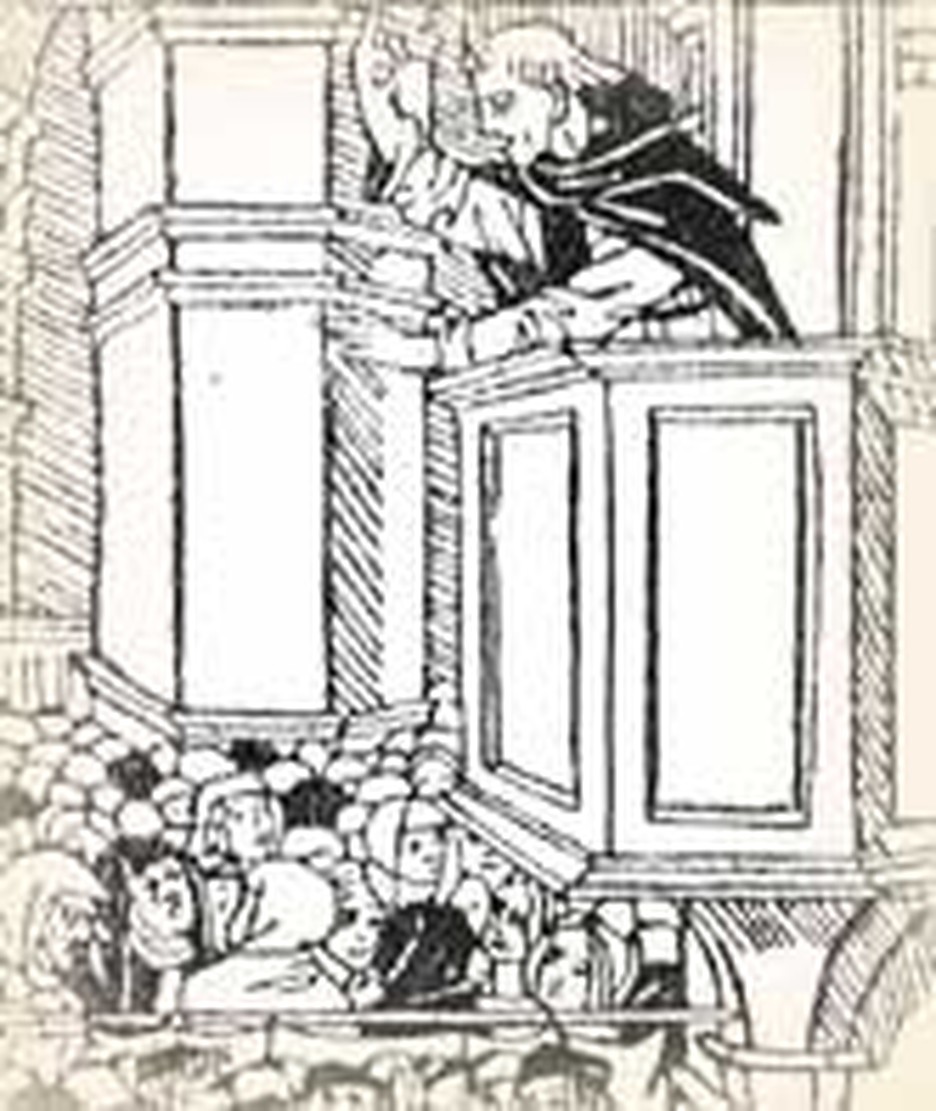
The young man left home secretly at 23, without parental approval, flinging aside years of medical and philosophical education, to join the Dominicans. Convinced of the reality of the after-life, with its dismal doom or glorious salvation, he became morose. An urgent sense of right drove him to denounce the morals of the day. At first his messages were too scholarly for the masses, but in time they gained power. Audiences pressed into chapel to hear him utter dark prophecies of the future of Italy and Florence.
Savonarola became one of the great names of his age. Pietro de Medici of Florence was a weak man. Savonarola's allies deposed the ineffectual tyrant and the priest became the city's effective leader, and a gadfly in the side of the corrupt Renaissance Pope, Alexander VI. He denounced papal iniquity and took political sides against the pope. Worst of all, from the Pope's point of view, he called upon Europe's leaders to dethrone the pontiff.
Alexander in turn sought to bring down the puritanical friar who spoke with such vehemence against his pleasures and vices. Yet he was patient and could bide his time, for he saw that the political tide must soon turn against Savonarola.
For a time, Savonarola triumphed. A Florentine republic was formed. Savonarola's bullies burned the "vanities" of the city-- art works and books. No building had sufficient capacity to hold the thousands who came for his sermons. By 1498 all had changed. Poorly conceived policies, by no means all Savonarola's fault, starved the city. Its coffers were empty. Alexander VI threatened interdiction. While many of Savonarola's predictions came true, others failed.
The Florentines turned against the preacher they had lauded. A Franciscan challenged Savonarola to an ordeal by fire. Savonarola's disciple Domenico da Pescia accepted as his surrogate. Crowds gathered. The Franciscan backed out and used every device to prevent the test. Cheated of their spectacle, the crowds blamed Savonarola. The next day he was arrested.
Between April 9th and May 23rd Savonarola was tortured repeatedly and forced to recant. Each time, when he recovered from the torments, he renounced his recantations, the last time with such boldness that his interrogators quailed. On this day, May 22, 1498, he was interrogated one last time. Seeing that he could not be moved, his interrogators sent him shackled back to his cell and sentenced him to death.
The sentence was carried out the next day. Savonarola and two friars were hung and burned. Scoffers shouted, "If you can work miracles, work one now!" After he was dead, his hand flew up, two fingers extended, as if blessing the crowd. The crowd panicked and fled the square, crushing several children to death.
Bibliography:
- Foster, K. "Savonarola, Girolamo." New Catholic Encyclopedia. New York : Thomson, Gale, 2002 - .
- Lord, John. Beacon Lights of History. New York: J. Clarke, 1888-1902.
- Roeder, Ralph. The Man of the Renaissance; four lawgivers: Savonarola, Machievelli, Castiglione, Aretino. Cleveland and New York: World Publishing, 1967, 1933.
- "Savonarola, Girolamo." The Oxford Dictionary of the Christian Church. Edited by F. L. Cross and E. A. Livingstone. Oxford, 1997.
- Uden, Grant. Anecdotes from History: being a collection of 1000 anecdotes, epigrams, and episodes illustrative of English and world history. Oxford, Blackwell, 1968.
- Various encyclopedia articles.
Last updated April, 2007.


